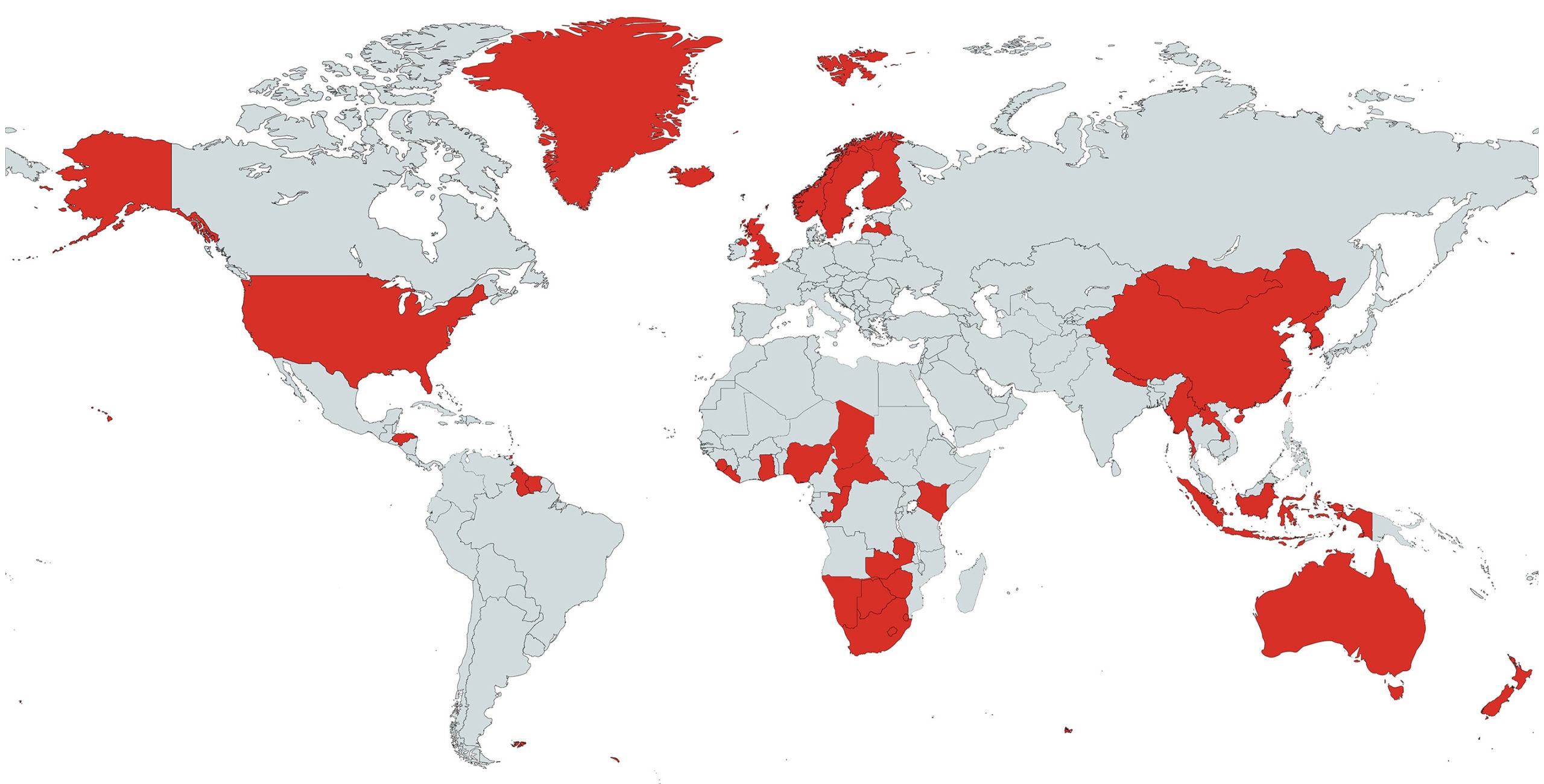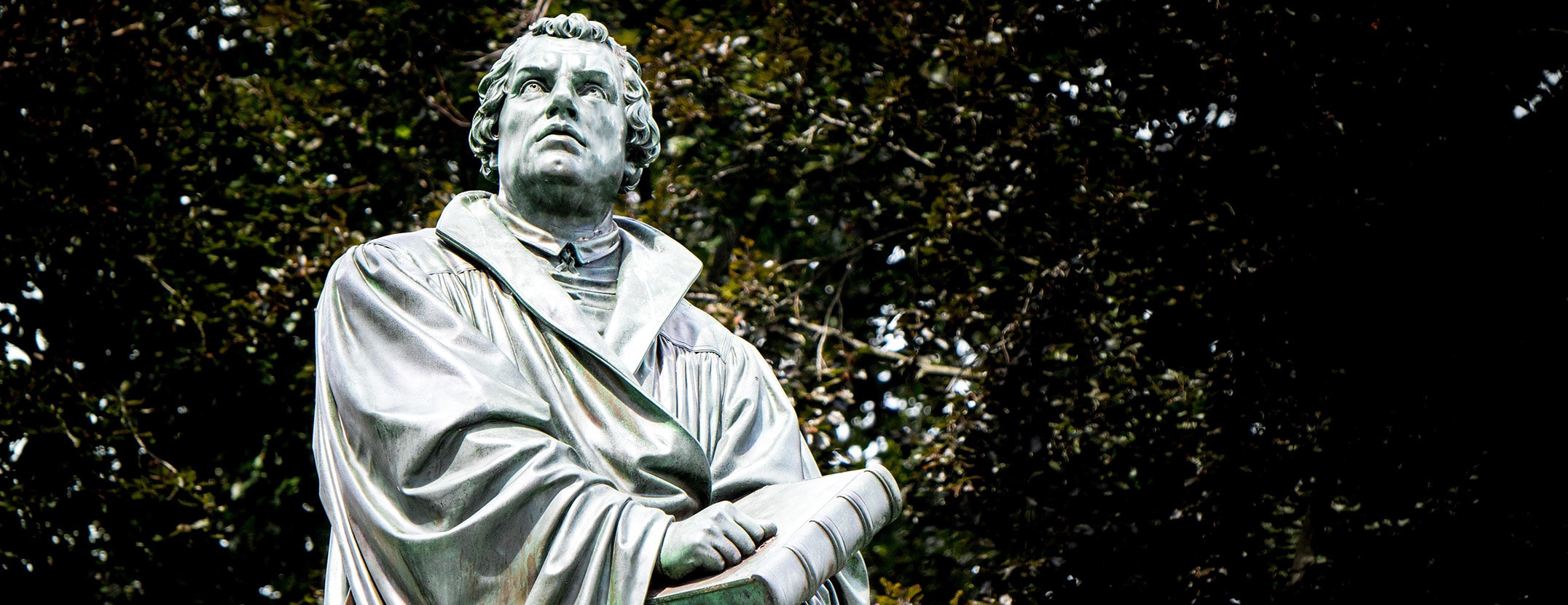
The Luther Monument in Worms, Rhineland-Palatinate, Germany
Martin Luther is arguably the single-most significant figure in Christianity after the Apostle Paul, and Christ himself. Martin Luther began a rebellion within the Catholic Church that still reverberates today. His teachings launched the Reformation, a movement that birthed the Protestant Church and fundamentally changed the face of Christianity across the globe. Today there are more than 800 million Protestants worldwide, and at approximately 43% of all Americans are Protestant.
Protestant Majority Countries
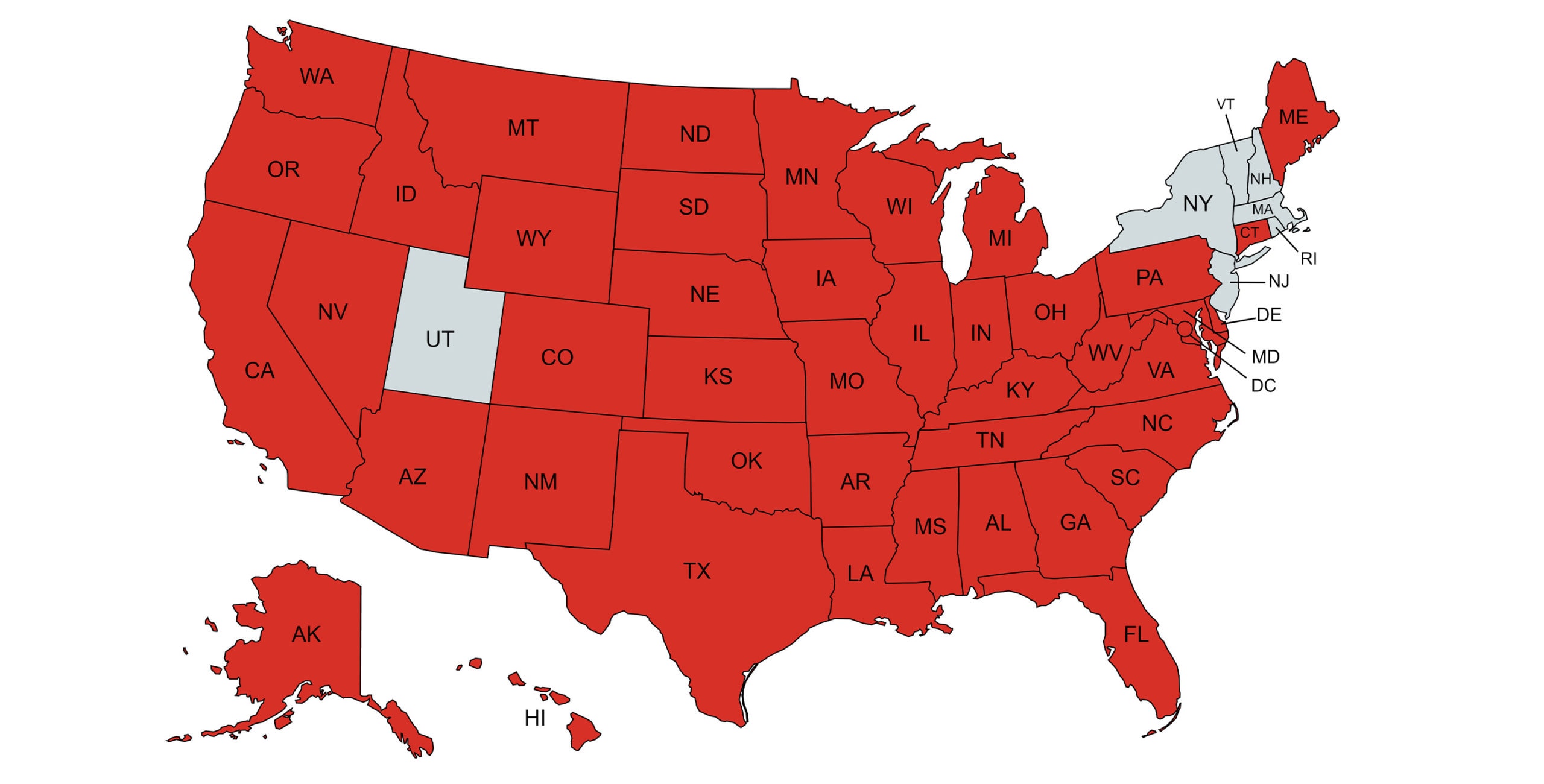 Protestant Majority States
Protestant Majority StatesThe early life of Martin Luther
Born in Eisleben, Germany, in 1483, Luther studied philosophy at Erfurt University. Following the completion of his degree, he briefly studied law before suddenly changing directions and joining an Augustinian monastery.
Luther was ordained as a priest before relocating in 1512 to Wittenberg, Germany, where he taught theology at the University of Wittenberg.
During this time, the Catholic Church practiced a doctrine known as “indulgences”: sinners could earn God’s forgiveness through acts of contrition. Though this theological concept initially encouraged prayers or fasting, penitence in Luther’s time could be bought. People paid priests for their holy absolution.
Luther objected to indulgences and was particularly bothered by Johann Tetzel, a Dominican friar who traveled through Germany collecting what he claimed were essentially sacred bribes, ostensibly to help fund the repair of St. Peter’s Basilica in Rome, now located in Vatican City.
Luther expressed his objections in the form of his “Ninety-Five Theses.”
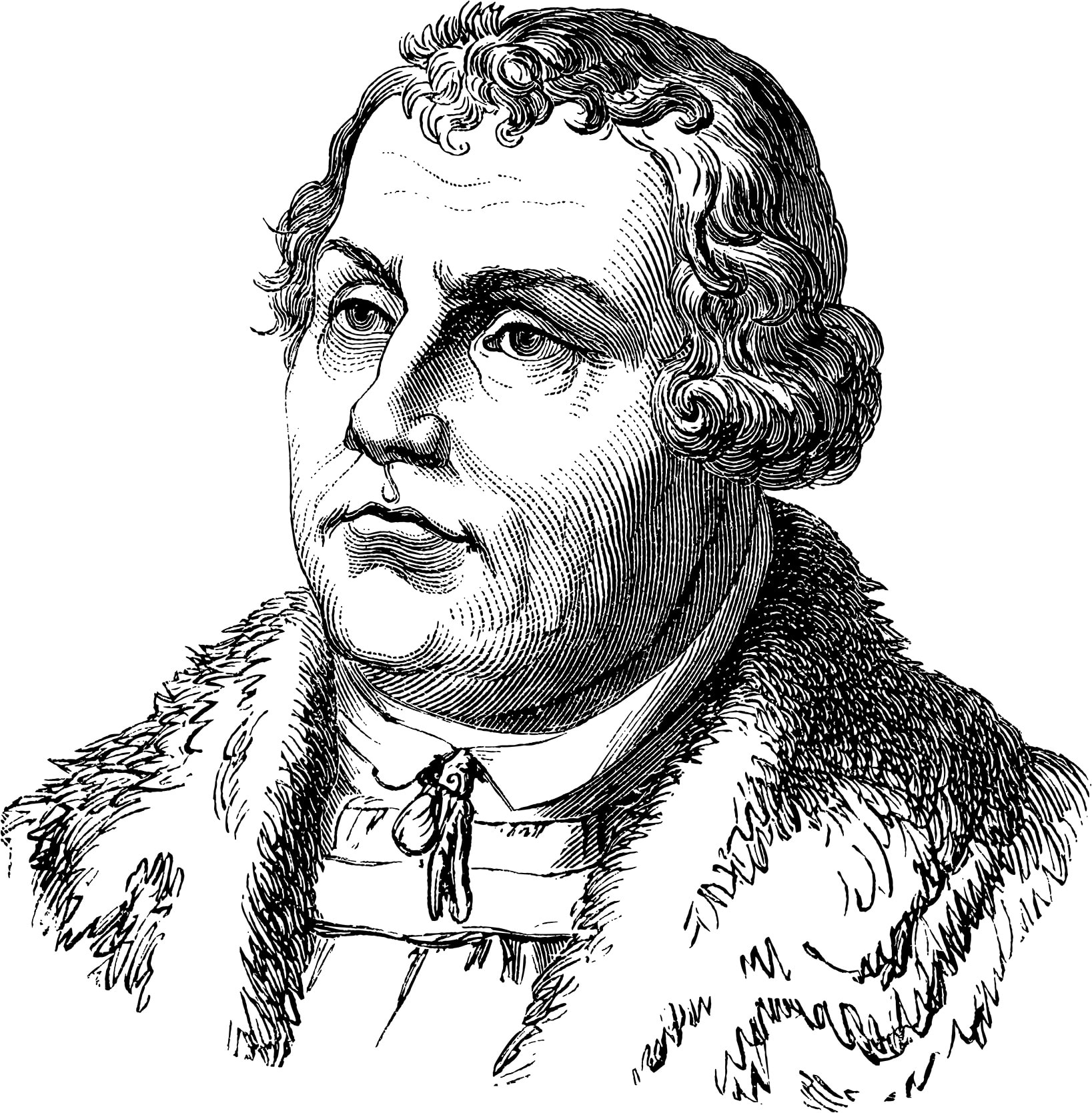
Martin Luther by William Hickman Smith Aubrey (Published 1878-1886)
The early life of Martin Luther
Born in Eisleben, Germany, in 1483, Luther studied philosophy at Erfurt University. Following the completion of his degree, he briefly studied law before suddenly changing directions and joining an Augustinian monastery.
Luther was ordained as a priest before relocating in 1512 to Wittenberg, Germany, where he taught theology at the University of Wittenberg.
During this time, the Catholic Church practiced a doctrine known as “indulgences”: sinners could earn God’s forgiveness through acts of contrition. Though this theological concept initially encouraged prayers or fasting, penitence in Luther’s time could be bought. People paid priests for their holy absolution.

The early life of Martin Luther
Born in Eisleben, Germany, in 1483, Luther studied philosophy at Erfurt University. Following the completion of his degree, he briefly studied law before suddenly changing directions and joining an Augustinian monastery.
Luther was ordained as a priest before relocating in 1512 to Wittenberg, Germany, where he taught theology at the University of Wittenberg.

Martin Luther by William Hickman Smith Aubrey (Published 1878-1886)
During this time, the Catholic Church practiced a doctrine known as “indulgences”: sinners could earn God’s forgiveness through acts of contrition. Though this theological concept initially encouraged prayers or fasting, penitence in Luther’s time could be bought. People paid priests for their holy absolution.
Luther objected to indulgences and was particularly bothered by Johann Tetzel, a Dominican friar who traveled through Germany collecting what he claimed were essentially sacred bribes, ostensibly to help fund the repair of St. Peter’s Basilica in Rome, now located in Vatican City.
Luther expressed his objections in the form of his “Ninety-Five Theses.”
Luther objected to indulgences and was particularly bothered by Johann Tetzel, a Dominican friar who traveled through Germany collecting what he claimed were essentially sacred bribes, ostensibly to help fund the repair of St. Peter’s Basilica in Rome, now located in Vatican City.
Luther expressed his objections in the form of his “Ninety-Five Theses.”
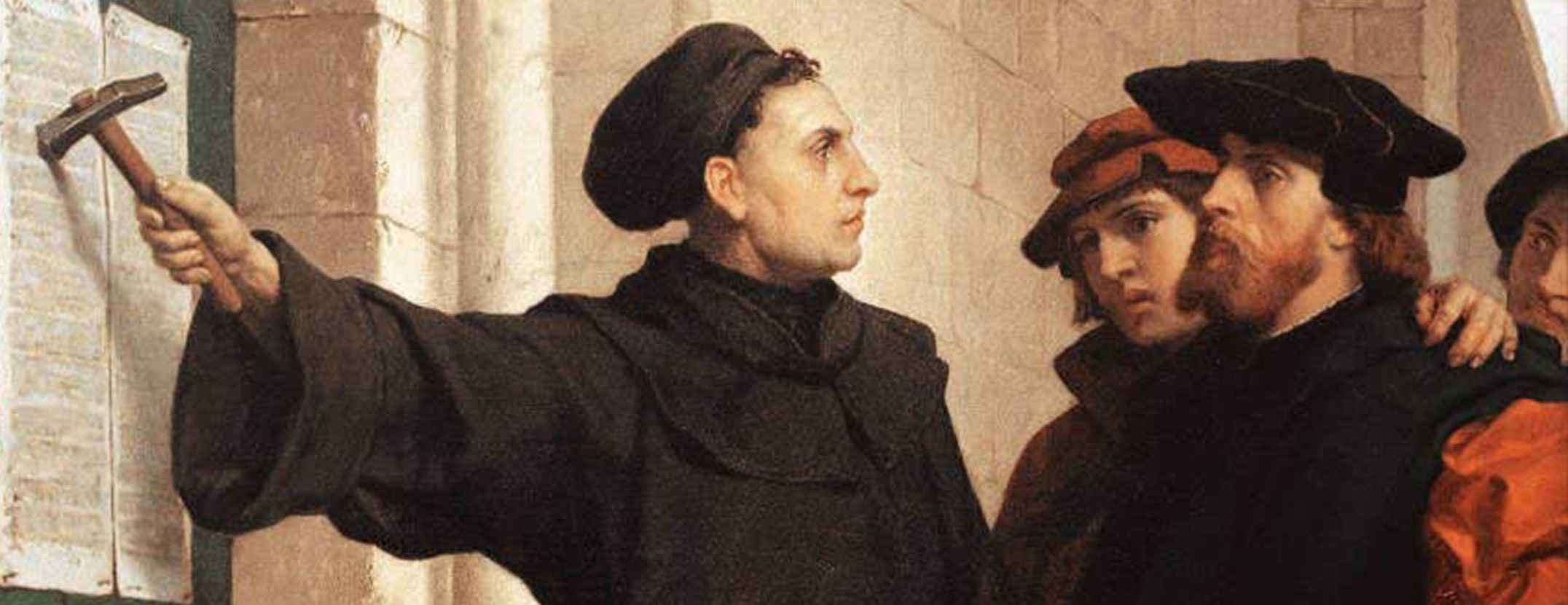
Martin Luther posted his Ninety-five Theses on the door of All Saints' Church, along with several other churches in Wittenberg, Germany
The Ninety-Five Theses
Also published under the title “Disputation on the Power and Efficacy of Indulgences,” Luther’s “Ninety-Five Theses” (written in Latin) was intended as a scholarly refutation of the doctrine of indulgences, which he felt undermined true salvation. Luther’s theses were written as a formal address to his superiors in the church.
Though the “Ninety-Five Theses,” originally published on October 31, 1517, are now considered the opening salvo in the Protestant Reformation, Luther’s initial intention was not a church rebellion. Instead, he sought theological debate.
The Church authorities, however, were ill-disposed to having their authority challenged. Though they initially sent theologians to debate Luther, Church leaders back in Rome wanted nothing less than for Luther to fully recant. Luther did not.
Due to the invention of the printing press a century earlier, Luther’s Theses spread quickly, as did his celebrity. As his theses spread (thanks to the printing press created a century earlier by Johannes Gutenberg), so did Luther’s celebrity. He grew into a public figure throughout the region, with his image appearing in multiple works of contemporaneous art. With such vociferous support, Luther refused to back down.
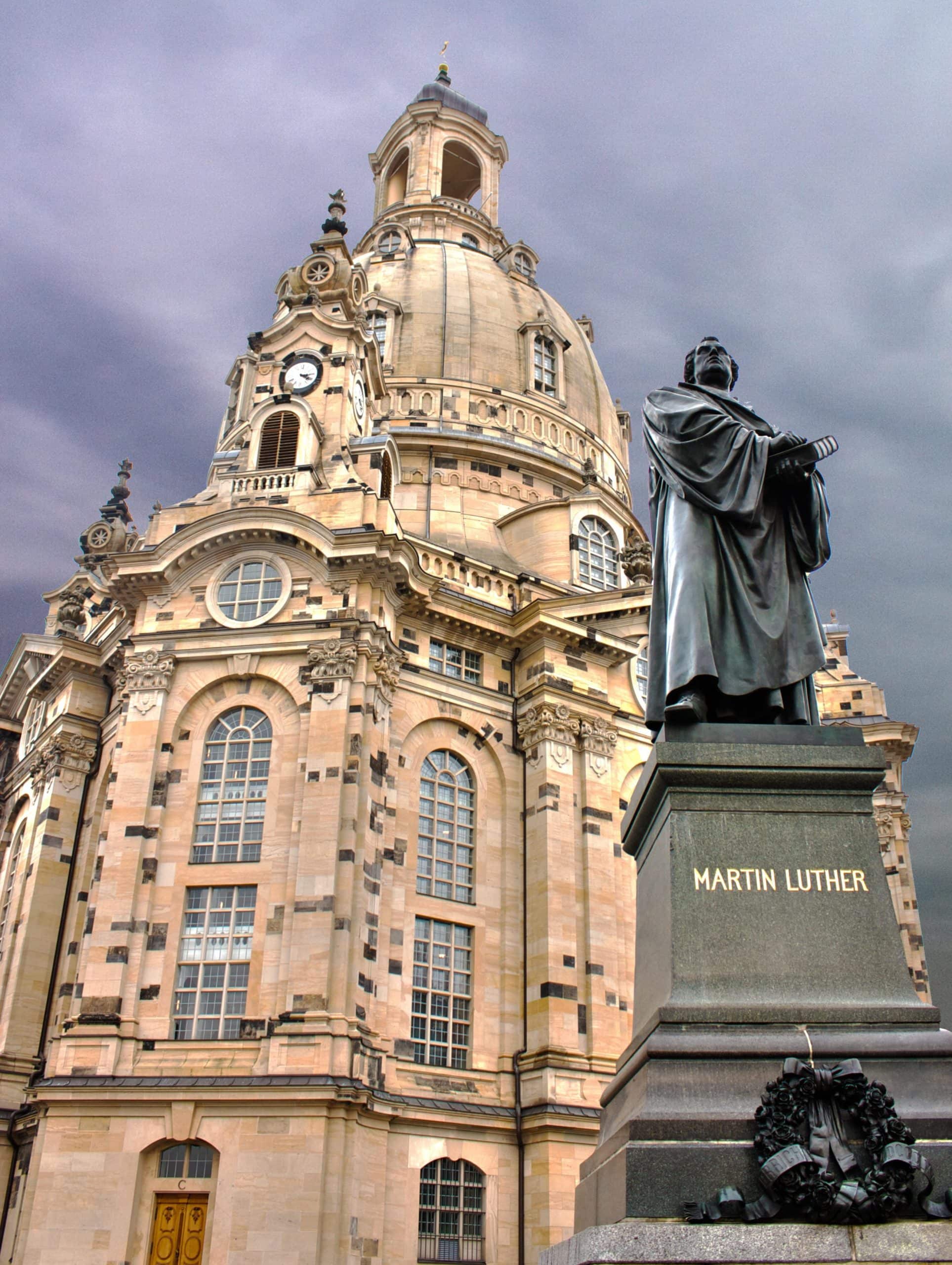
Frauenkirche, Dresden (Church of Our Lady), Germany
The Protestant Rebellion
The Roman Catholic Church labeled Luther a heretic (a charge punishable by death), but instead of backing down Luther’s rhetoric only grew sharper. He compared the Church to Sodom and Gomorrah and Babylon, even labeling at least one of his critics the “Antichrist.”
In 1521, Luther was put on trial by the Catholic Church at the Imperial Diet of Worms. Since Germany was in the Holy Roman Empire, when the judgment (the “Edict of Worms”) was given, Luther was excommunicated from the Church and deemed an outlaw of the state.
Luther was not dissuaded. He spent the rest of his life railing against the Catholic Church in his writings and teachings. At this this time Luther also produced the world’s first German translation of the Bible.
Breaking further with Catholic orthodoxy, Luther married a former nun, Katharina von Bora, in 1525. He lived the rest of his life in Wittenberg, dying in 1546 at age 65, while visiting his birth town of Eisleben.
In 1567, Pope Pius V finally capitulated, and abolished monetary indulgences.
The Protestant Reformation
By the time of Luther’s death, the Protestant Reformation had already birthed two major denominations: Lutheranism and Anabaptism.
In 1536, a lawyer named John Calvin published “Institutes of the Christian Religion,” which would lead to the establishment of Calvinism, one of the two main branches of Protestant theology (the other being Arminianism).
While the Catholic Church remains the largest sect of Christianity in the world, the Protestant Church’s various denominations (e.g., Baptists, Presbyterians) and offshoot religions (e.g., Mormonism, Jehovah’s Witnesses) continually grow and now represent more than 60% of Christians in the United States.
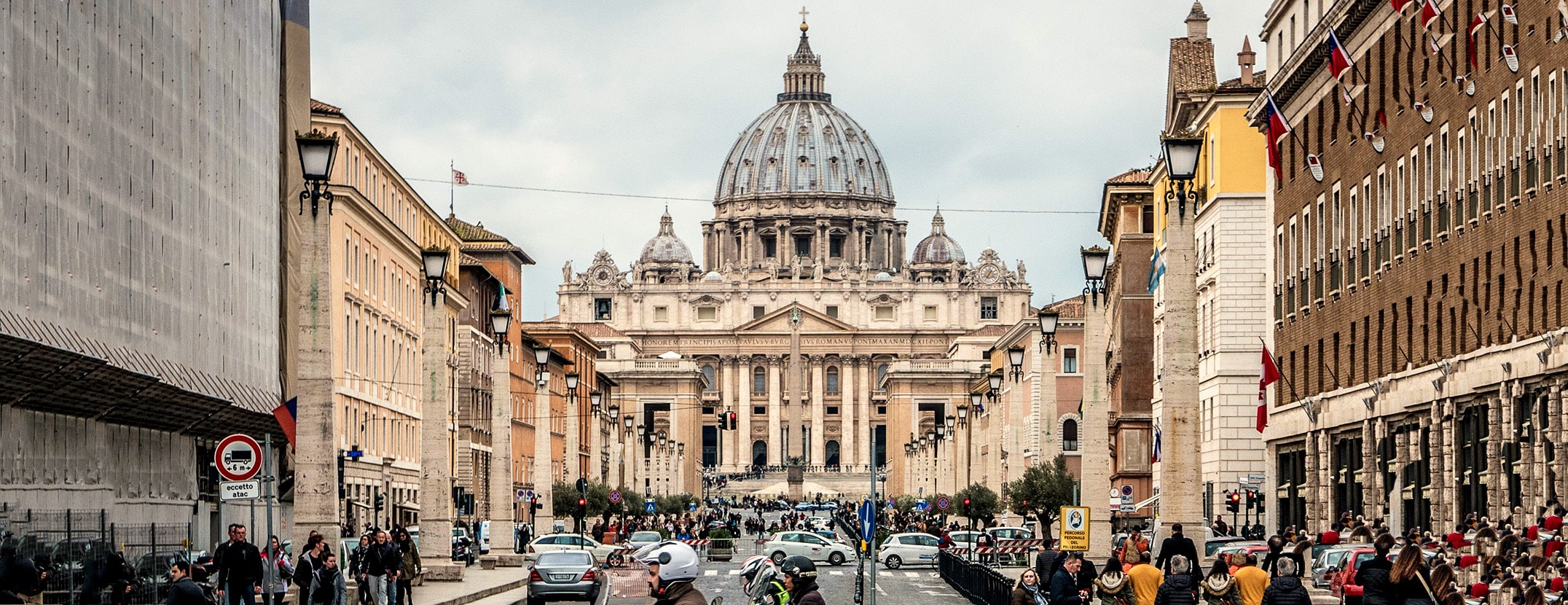
Saint Peter's Basilica, Vatican City, Rome, Italy
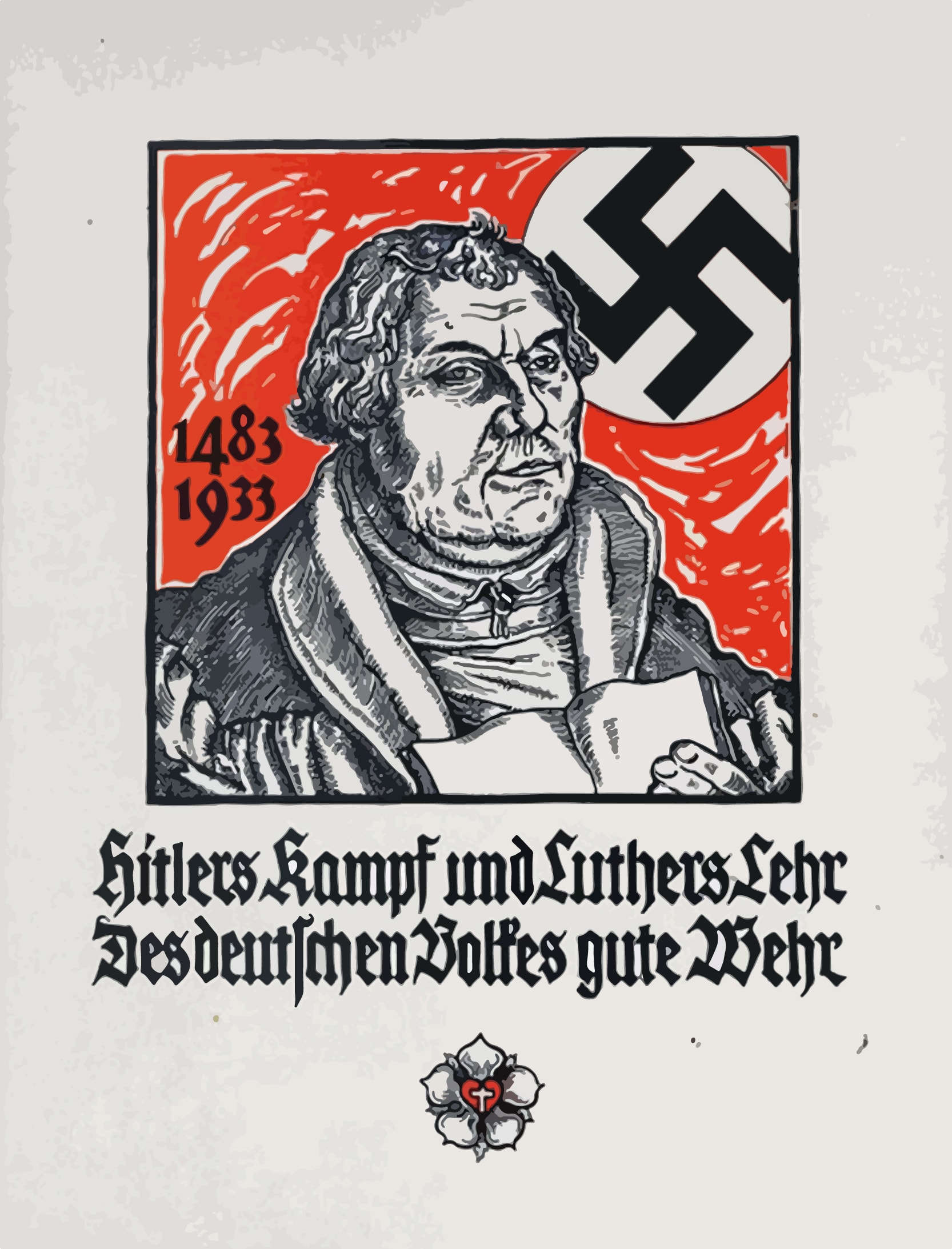
1933 Nazi propaganda poster
A Legacy of Antisemitism
Luther’s legacy does not end with the creation of the Protestant Church. In his later years, he aggressively attacked Jews who would not convert to Christianity. In 1543, he published the virulently antisemitic “The Jews and Their Lies”, which labeled Jews “base, whoring people.”
Considering Luther’s German heritage, the connections between Luther’s antisemitism and Adolf Hitler are hard to ignore. In fact, Nazi propaganda explicitly referenced Luther and his teachings that Jews were the enemy of the Church.
While antisemitism predates Luther and existed in places other than Germany, it is impossible to discuss Luther’s Reformation without acknowledging his influential bigotry.
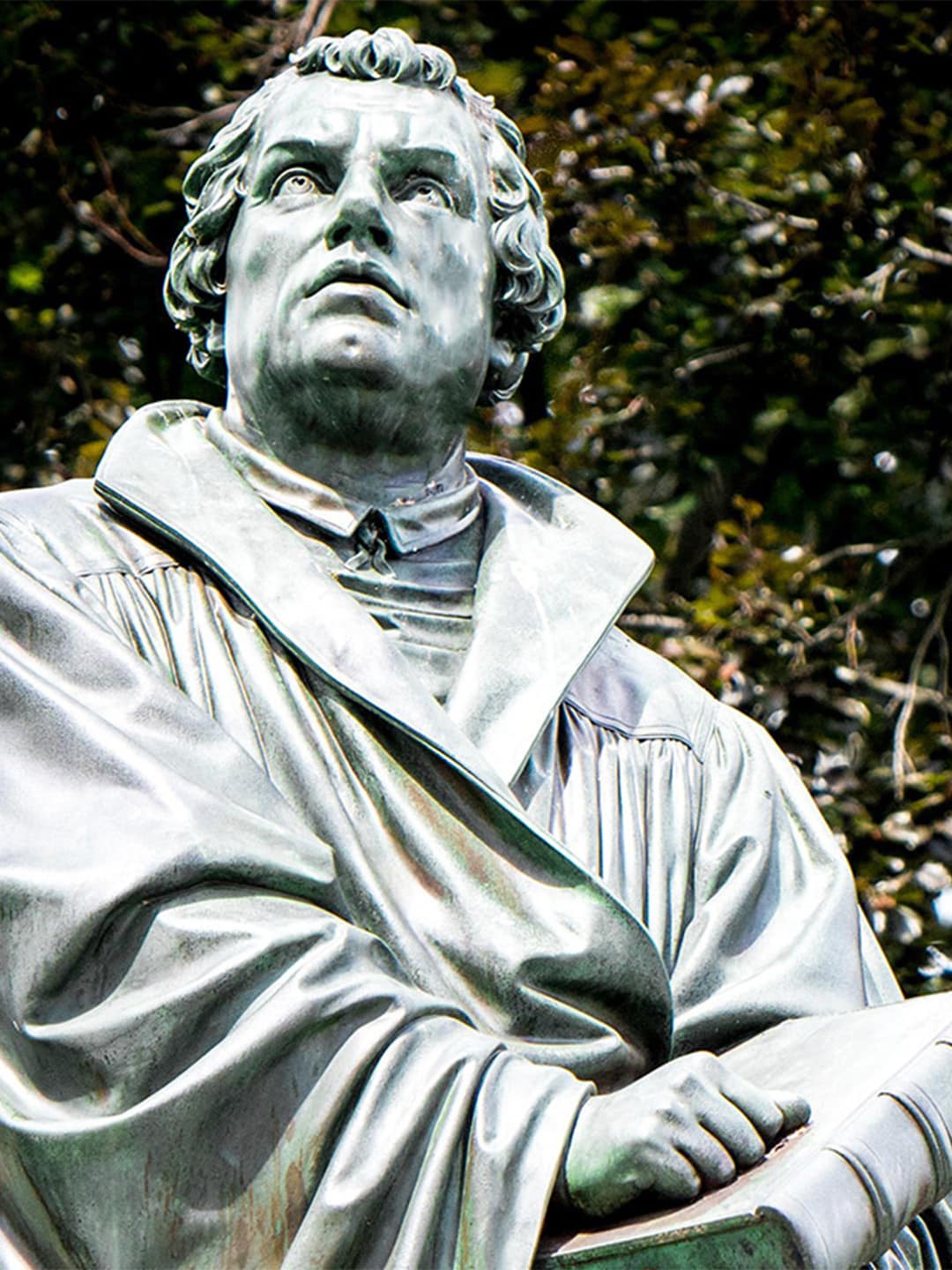
Martin Luther is arguably the single-most significant figure in Christianity after the Apostle Paul, and Christ himself. Martin Luther began a rebellion within the Catholic Church that still reverberates today. His teachings launched the Reformation, a movement that birthed the Protestant Church and fundamentally changed the face of Christianity across the globe.

The early life of Martin Luther
Born in Eisleben, Germany, in 1483, Luther studied philosophy at Erfurt University. Following the completion of his degree, he briefly studied law before suddenly changing directions and joining an Augustinian monastery.
Luther was ordained as a priest before relocating in 1512 to Wittenberg, Germany, where he taught theology at the University of Wittenberg.
During this time, the Catholic Church practiced a doctrine known as “indulgences”: sinners could earn God’s forgiveness through acts of contrition. Though this theological concept initially encouraged prayers or fasting, penitence in Luther’s time could be bought. People paid priests for their holy absolution.
Luther objected to indulgences and was particularly bothered by Johann Tetzel, a Dominican friar who traveled through Germany collecting what were essentially sacred bribes, ostensibly to help fund the repair of St. Peter’s Basilica in Rome, now located in Vatican City.
Luther expressed his objections in the form of his “Ninety-Five Theses.”
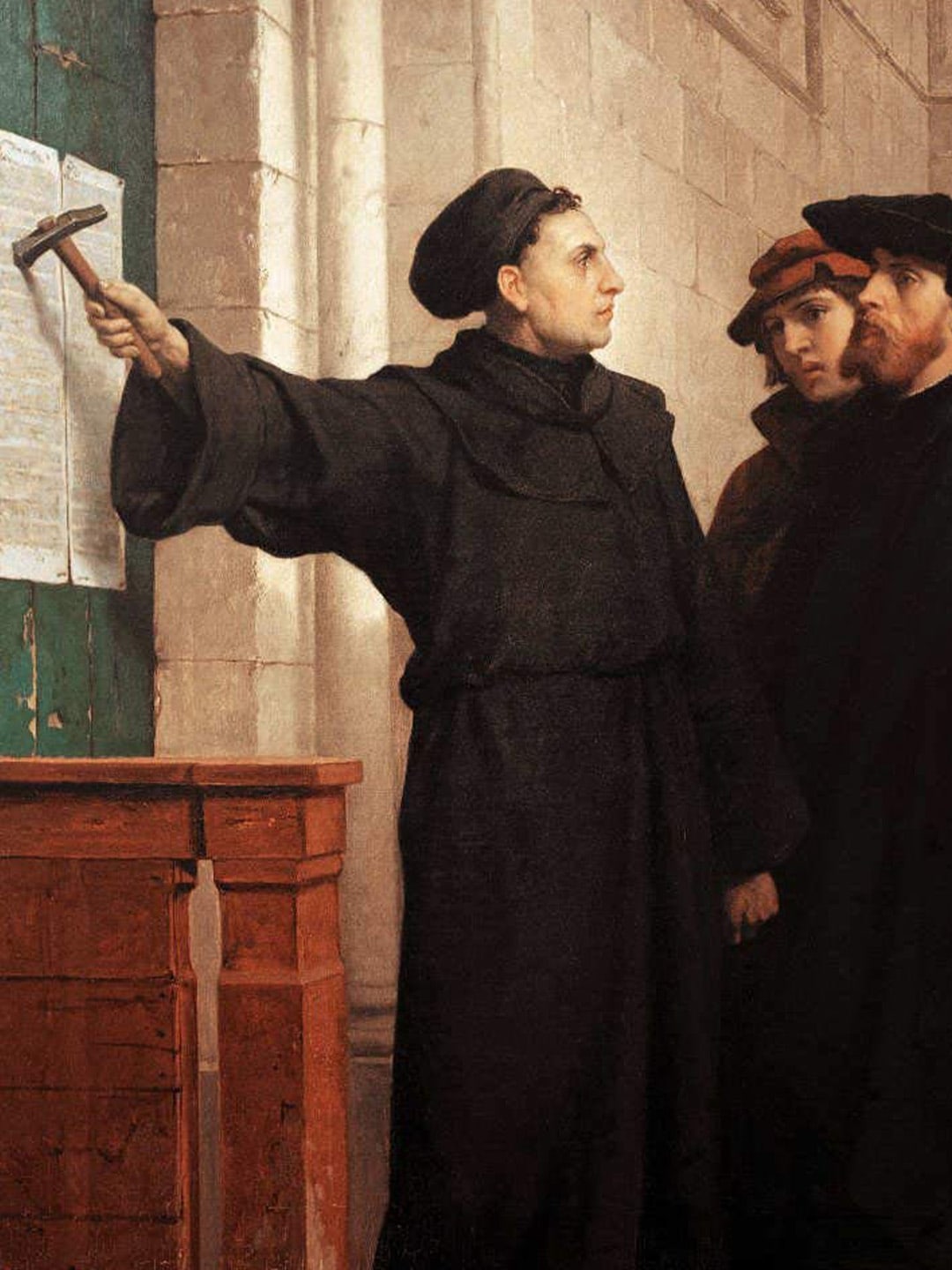
The Ninety-Five Theses
Also published under the title “Disputation on the Power and Efficacy of Indulgences,” Luther’s “Ninety-Five Theses” (written in Latin) was intended as a scholarly refutation of the doctrine of indulgences, which he felt undermined true salvation. Luther’s theses were written as a formal address to his superiors in the church.
Though the “Ninety-Five Theses,” originally published on October 31, 1517, are now considered the opening salvo in the Protestant Reformation, Luther’s initial intention was not a church rebellion. Instead, he sought theological debate.
The Church authorities, however, were ill-disposed to having their authority challenged. Though they initially sent theologians to debate Luther, Church leaders back in Rome wanted nothing less than for Luther to fully recant. Luther did not.
Due to the invention of the printing press a century earlier, Luther’s Theses spread quickly, as did his celebrity. As his theses spread (thanks to the printing press created a century earlier by Johannes Gutenberg), so did Luther’s celebrity. He grew into a public figure throughout the region, with his image appearing in multiple works of contemporaneous art. With such vociferous support, Luther refused to back down.

The Protestant Rebellion
The Roman Catholic Church labeled Luther a heretic (a charge punishable by death), but instead of backing down Luther’s rhetoric only grew sharper. He compared the Church to Sodom and Gomorrah and Babylon, even labeling at least one of his critics the “Antichrist.”
In 1521, Luther was put on trial by the Catholic Church at the Imperial Diet of Worms. Since Germany was in the Holy Roman Empire, when the judgment (the “Edict of Worms”) was given, Luther was excommunicated from the Church and deemed an outlaw of the state.
Luther was not dissuaded. He spent the rest of his life railing against the Catholic Church in his writings and teachings. At this this time Luther also produced the world’s first German translation of the Bible.
Breaking further with Catholic orthodoxy, Luther married a former nun, Katharina von Bora, in 1525. He lived the rest of his life in Wittenberg, dying in 1546 at age 65, while visiting his birth town of Eisleben.
In 1567, Pope Pius V finally capitulated, and abolished monetary indulgences.
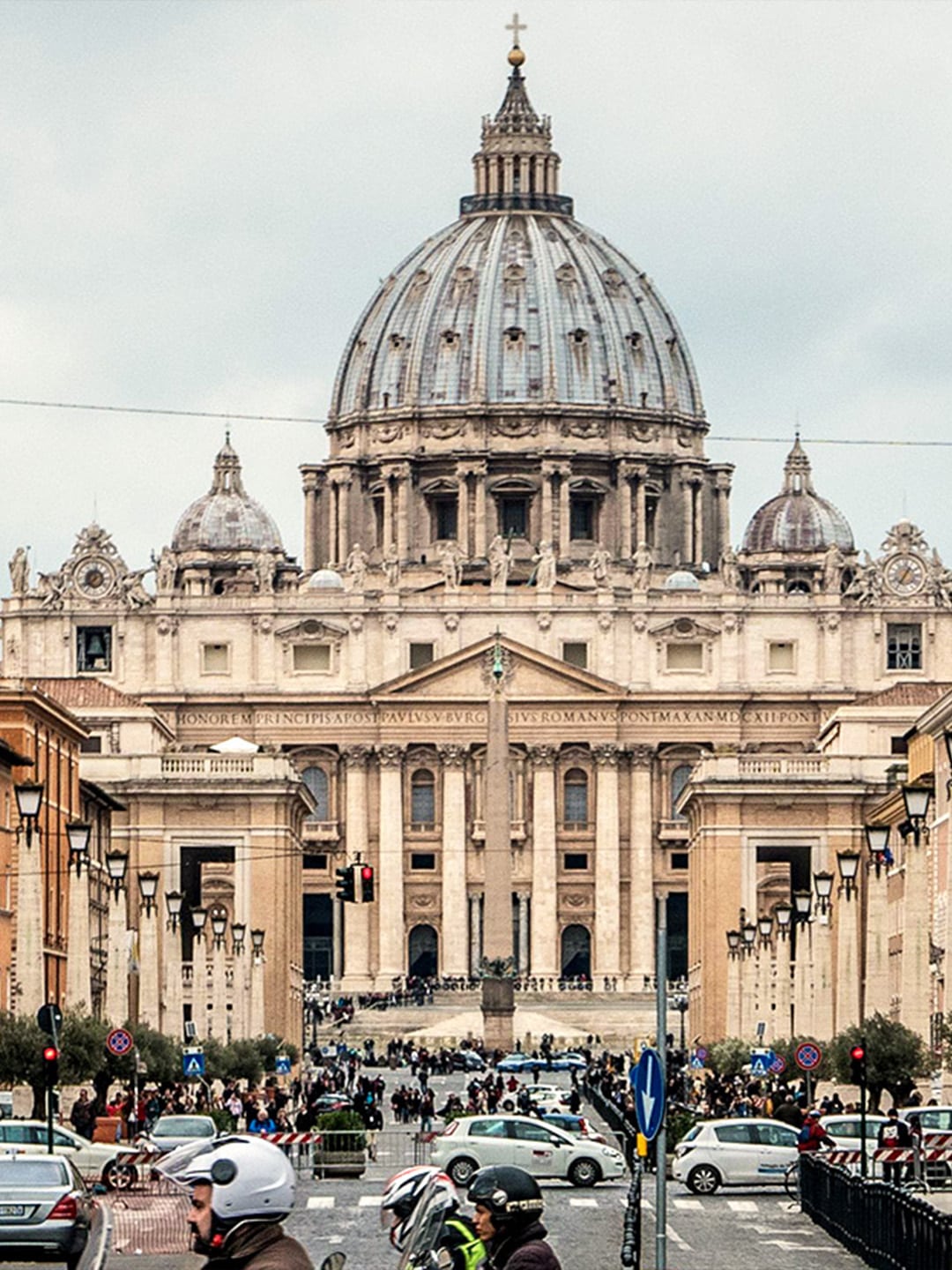
The Protestant Reformation
By the time of Luther’s death, the Protestant Reformation had already birthed two major denominations: Lutheranism and Anabaptism.
In 1536, a lawyer named John Calvin published “Institutes of the Christian Religion,” which would lead to the establishment of Calvinism, one of the two main branches of Protestant theology (the other being Arminianism).
While the Catholic Church remains the largest sect of Christianity in the world, the Protestant Church’s various denominations (e.g., Baptists, Presbyterians) and offshoot religions (e.g., Mormonism, Jehovah’s Witnesses) continually grow and now represent more than 60% of Christians in the United States.

A Legacy of Antisemitism
Luther’s legacy does not end with the creation of the Protestant Church. In his later years, he aggressively attacked Jews who would not convert to Christianity. In 1543, he published the virulently antisemitic “The Jews and Their Lies”, which labeled Jews “base, whoring people.”
Considering Luther’s German heritage, the connections between Luther’s antisemitism and Adolf Hitler are hard to ignore. In fact, Nazi propaganda explicitly referenced Luther and his teachings that Jews were the enemy of the Church.
While antisemitism predates Luther and existed in places other than Germany, it is impossible to discuss Luther’s Reformation without acknowledging his influential bigotry.
